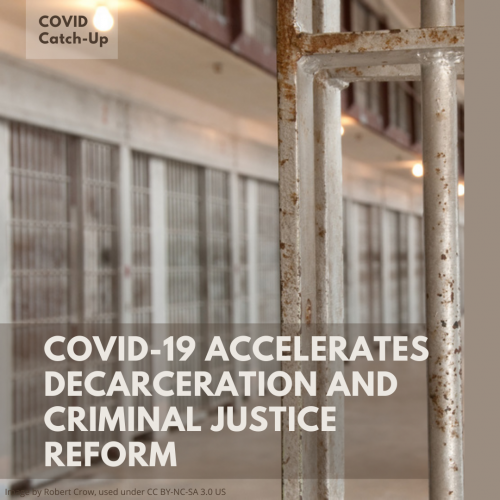Graphic by Ishani Singh.
The push for decarceration has become increasingly urgent over the past months as calls for an overhaul of the criminal justice system intersect with worrying statistics about the rapid spread of COVID-19 in jails and prisons. In fact, the National Academies of Science, Engineering, and Medicine (NASEM) recently released a report recommending that officials reduce the size of the incarcerated population as much as possible, both by releasing people who are currently behind bars and preventing others from entering the prison system in the first place.
Why is COVID such a problem in correctional facilities? For one, these institutions tend to be overcrowded and poorly ventilated, and inmates lack access to public health systems. Additionally, chronic health issues are more prevalent among incarcerated populations, increasing the likelihood of severe COVID infection and contributing to a death rate three times higher than that of the general population.
Although jail populations decreased significantly at the beginning of the pandemic, this trend was driven primarily by reductions in arrests, not by efforts to release people who were already incarcerated. The NASEM report also focuses on strategies for limiting new incarcerations, such as directing police officers to issue citations instead of arrests, ceasing the use of incarceration as a punishment for the inability to pay fines, and treating technical violations with increased leniency to limit reincarceration of people on probation or parole.

